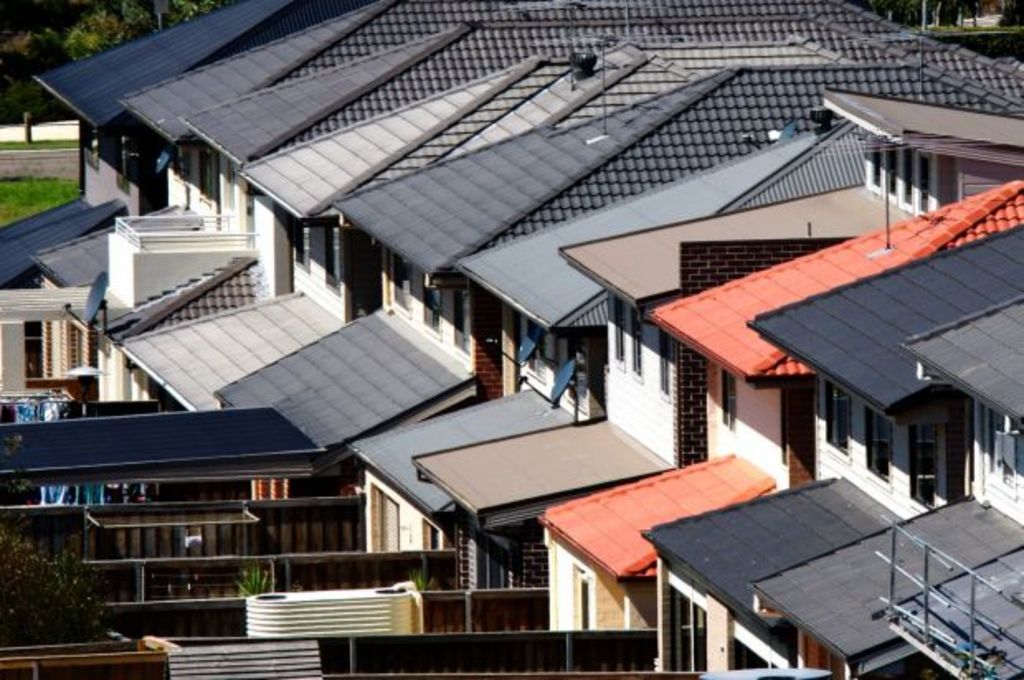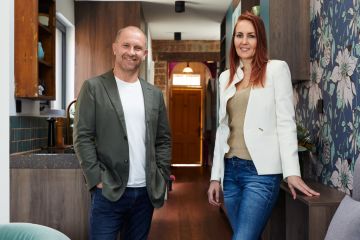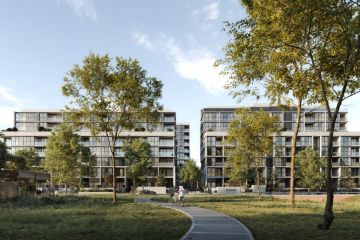'I absolutely love it here': Re-thinking the stigma around suburban housing developments

While experts believe that curbing urban sprawl is vital for the future of our cities, a growing lack of affordable housing means that buying into new suburban developments remains one of the best options for many families.
New suburban estates – and a stigma around living in them – is not new in Australia. Our now-established inner-city suburbs filled with terrace houses, art deco homes and Californian bungalows were once both new and often derided.
But, politics and history aside, what’s it like living in one of the new ‘burbs?
Last October, Charlotte Fraser, 44, and her family moved into their new four-bedroom home in The Point estate in Point Lonsdale. Fraser, her partner Peter Macmillan, 44, and their two children Mia, 7, and Thomson, 3, found immediately that “there were people wanting to create that sense of community”.
Kids ride their bikes by, she says; families gather at the playground, natural reserve or around the lake, and outside their home “we’d see these friends or those friends”.
As Fraser grew up with strong links to the established neighbourhoods in the area where residents “are not happy” with the new development, she admits she initially had an “inner conflict” about moving to the new estate. But, after looking at established homes, she realised that for the money they had, “we would have to basically buy an old 1970s dump and then spend our weekends renovating it”.
This wasn’t the life Fraser valued. “I wanted to spend more time with our children, and be living in the present, rather than renovating something that’s going to be good in 10 years.”
- Related: Busting the myth that apartments lack community
- Related: What moving to overseas taught me about life
- Related: How a couple created their unique dream home
Currently expecting their first baby, nurse Lana Ruban, 26, and her boyfriend Scott Gilliland, 27, moved into a four-bedroom house in a new suburban development three months ago.
When looking to buy, they found they could only afford tiny places with no back yard closer to the city. “We didn’t want to start a family and then have to move within the next five to 10 years,” Ruban says. “There was no point buying something, or building something, that we were going to outgrow in the near future.”
So far, there are only three houses on their street, with one neighbour on either side of them. “They look out for us,” Ruban says. “One of our neighbours has an Iraqi background and they cook us meals, and bring them over to us all the time.”
The development has a Facebook page so the residents can communicate with each other, and a Christmas barbecue. “You go over to the supermarket across the road and there’s so many young families there,” says Ruban. “You can see that it’s people like us, or people 10 years older, that are moving out because they want a bigger space, a bigger house.”
Both Ruban and Fraser encourage families looking at new developments to do their homework. “Reflect on your values,” says Ruban, and figure out what is most important to you.
“Have a look at how the estate is designed,” Fraser says. “Think about how that might develop a sense of community: whether it has nature in it, whether it has different facilities – it’s not just every single square inch filled up with housing.”
Both Fraser and Ruban resent the notion that residents in new developments lack community. “People say, ‘You don’t know your neighbours in those estates’,” Ruban says. “But you don’t know your neighbours if you move into a house in [the city], anyway.”
Fraser agrees. “It gets looked down upon living in an estate, but I absolutely love it here,” she says. “We’ve got a fantastic house, great view and a great community with other people around.”
We recommend
We thought you might like
States
Capital Cities
Capital Cities - Rentals
Popular Areas
Allhomes
More







